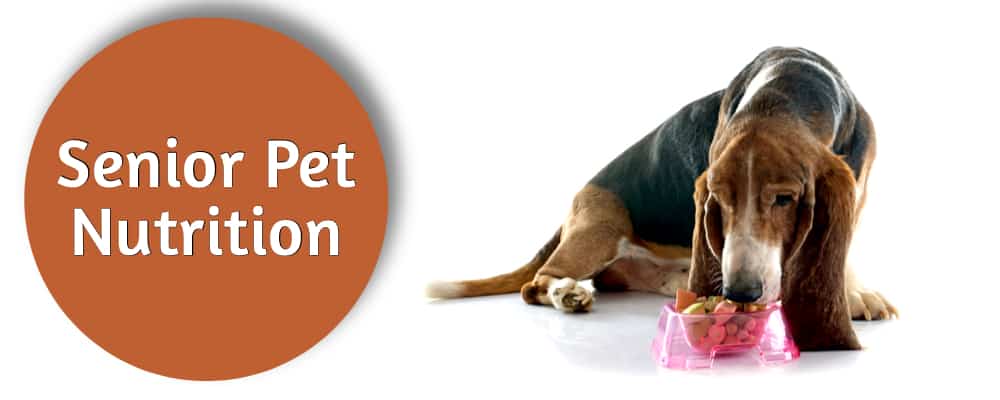As the owner of a senior dog, it’s important to understand their changing nutritional needs. Once they become a senior, they will start to take life a little easier. Senior dogs are less active than they used to be, and have a slower metabolism, so they don’t need as many calories. As the body slows down, it uses less energy, so the tendency to deposit fat is increased. What older dogs need to maintain their healthy weight is high quality, easy-to-digest protein. A senior life stage diet is indicated, unless there is a medical condition that requires therapeutic diet instead.
If your older dog appears reluctant to eat, check with your vet that there’s not an underlying medical reason. If they are healthy, there could be a very simple solution – like feeding them little and often, varying the textures and flavors in their food or warming it up a bit to release those tasty smells!
As senior dogs tend to be less active, have a slower metabolism, and may have mobility issues such as osteoarthritis, you might notice your pet putting on a bit of weight as they get older. While some health problems can lead to obesity, being overweight can cause health problems too, and put more strain on joints. Because of this, it’s very important to monitor your dog’s body condition regularly.
Changing to a lower calorie diet can be a good idea. Most senior dog food formulas will contain lower calorie levels and a careful balance of other nutrients, such as protein, essential fatty acids and antioxidants to support their ageing joints and immune system.
If you think your dog is overweight, make an appointment to speak to your vet to discuss the best way forward. It may be a simple case that your dog is eating too much, or they may have an underlying medical problem that can be addressed. Either way, your vet may recommend a more calorie-restricted weight loss diet or a special diet dog food for older dogs.
Take advice from your vet before increasing your dog’s exercise levels too, especially if they have mobility issues. You might find a reduced-weight bearing form of exercise, like hydrotherapy, would be helpful.
Changing their food
It’s always a good idea, when switching from one food to another, to introduce the new food gradually. The same is true when switching from an adult to a senior dog food diet. Start to add the new food slowly over seven to ten days, increasing the proportions daily. Avoid sudden switching as this can give your dog an upset tummy.
How to feed your older dog
Your dog will probably be used to being fed twice a day, although as they reach their senior years they may prefer smaller portions more often.
To bring out the food’s taste and smell, serve it at room temperature. Dry complete foods should be stored in a dry, clean environment. You can help keep the food smelling and tasting good by keeping it in re-sealable packaging or an airtight container.
When it comes to mealtime, feed your dog in a quiet place where they can eat in peace without being interrupted. If you have more than one dog, feed them at the same time but separately so that one doesn’t bully or snatch food from the other. Older dogs that suffer with arthritis may find it harder to reach down to their food and therefore prefer a slightly raised bowl.
Remember, older dogs are more prone to weight gain than adult dogs, so be careful not to overfeed them. If you’ve recently changed your dog over to a new food, follow your veterinarian’s instructions or use the feeding guide on the bag. The feeding guides are only approximate, so monitor your dog’s body condition regularly and adjust the amount to maintain their ideal weight. As an important part of their diet, your dog will need easy access to fresh clean drinking water throughout the day and night.
